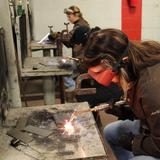School Highlights
Anoka Technical College serves 2,197 students (38% of students are full-time).
The college's student:teacher ratio of 20:1 is lower than the state community college average of 22:1.
Minority enrollment is 36% of the student body (majority Black), which is less than the state average of 42%.
Quick Stats (2025)
- Enrollment: 2,197 students
- In-state tuition: $5,590
- Out-state tuition: $5,590
- Student:teacher ratio: 20:1
- Minority enrollment: 36%
- Source: Integrated Postsecondary Education Data System (IPEDS)
School Overview
The teacher population of 112 teachers has stayed relatively flat over five years.
Anoka Technical College
(MN) Community College Avg.
Carnegie Classification
Associate's Colleges: High Career & Technical-High Traditional
Associate's Colleges: Mixed Transfer/Career & Technical-Mixed Traditional/Nontraditional
Institution Level
At least 2 but less than 4 years
At least 2 but less than 4 years
Institution Control
Public
Public
Total Faculty
112 staff
153 staff
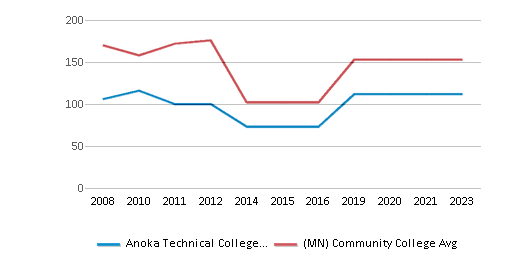
School Calendar
Student Body
The student population of Anoka Technical College has grown by 19% over five years.
The student:teacher ratio of 20:1 has increased from 15:1 over five years.
The Anoka Technical College diversity score of 0.56 is less than the state average of 0.63. The school's diversity has grown by 14% over five years.
Total Enrollment
2,197 students
2,555 students
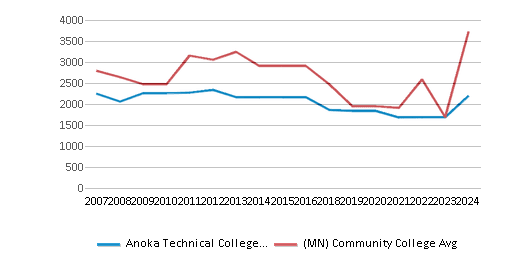
Student : Teacher Ratio
20:1
22:1
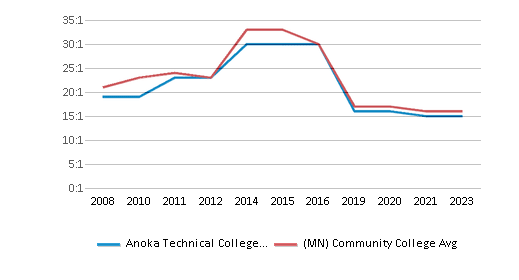
# Full-Time Students
842 students
915 students
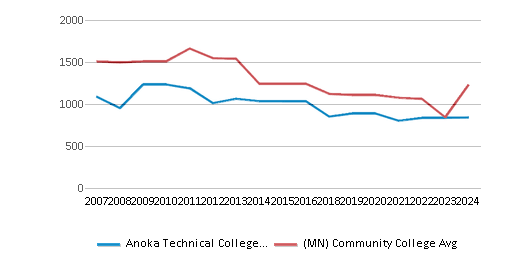
# Part-Time Students
1,355 students
1,808 students
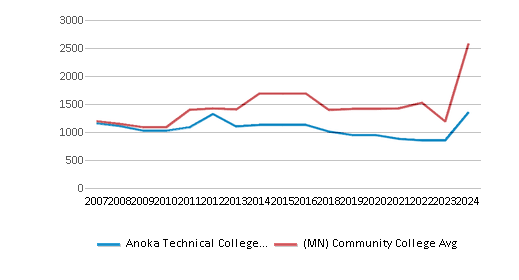
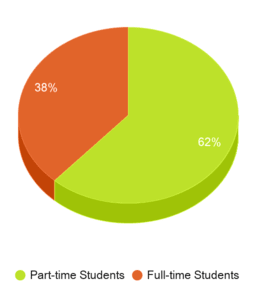
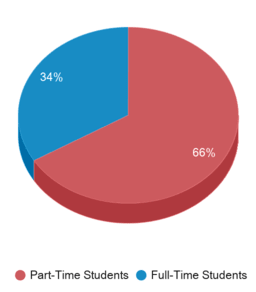
# Enrollment Undergraduate
219 students
372 students
# Full-Time Undergraduate Students
842 students
842 students
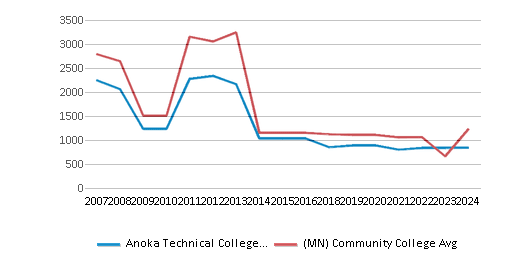
# Full-Time Graduate Students
n/a
38 students
# Part-Time Undergraduate Students
1,355 students
1,771 students
# Part-Time Graduate Students
n/a
12 students
Total Dormitory Capacity
n/a
116 students
% American Indian/Alaskan
n/a
1%
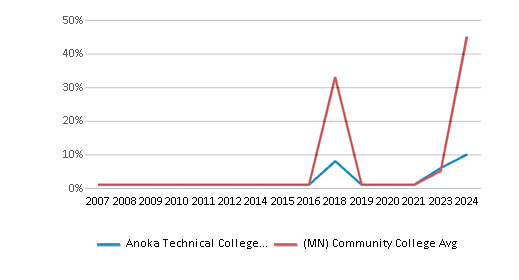
% Asian
6%
6%

% Hispanic
7%
8%
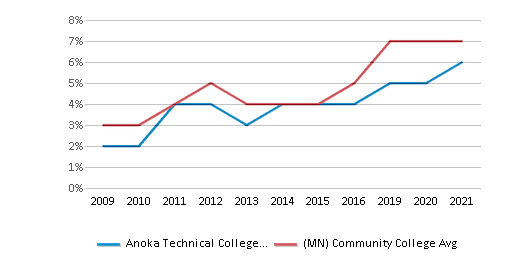
% Black
15%
15%
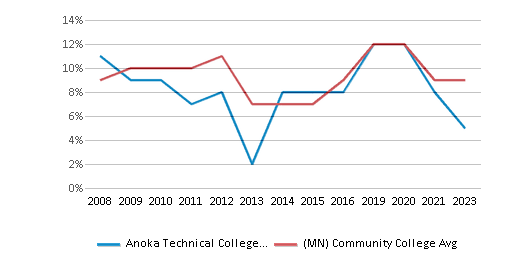
% White
64%
58%
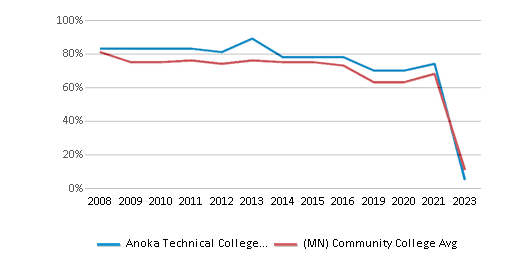
% Hawaiian
n/a
1%
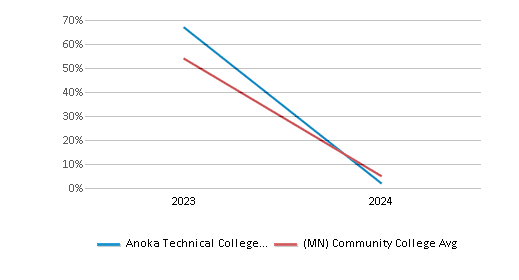
% Two or more races
4%
4%
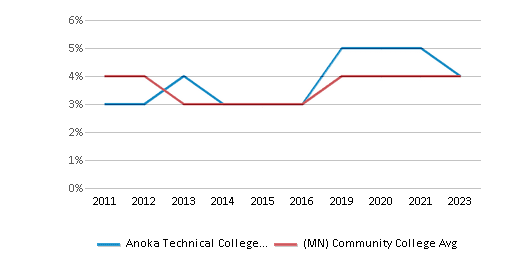
% Non Resident races
n/a
1%
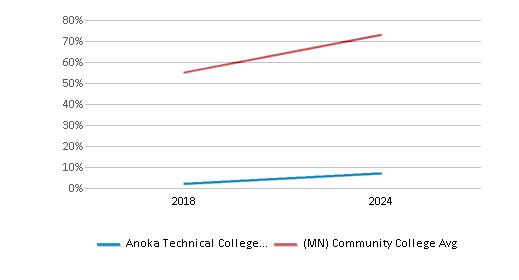
% Unknown races
3%
6%
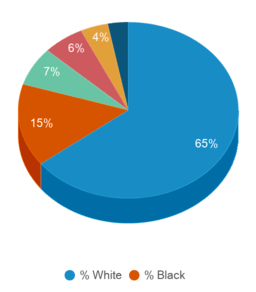

Diversity Score
0.56
0.63
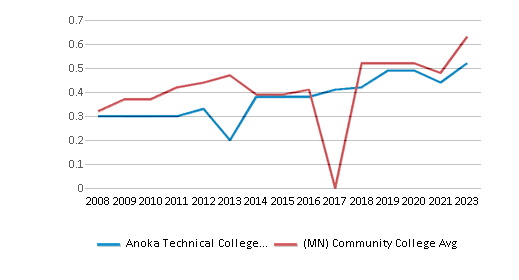
College Completion Rate (Students who graduate in less than 4 years)
0.4696%
0.3421%
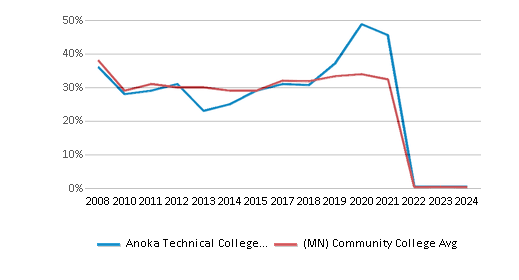
College Completion Rate (Students who graduate in 4 years or more than 4 years)
n/a
0.5652%
Average Graduate Earnings (10 Years)
$39,800
$36,900
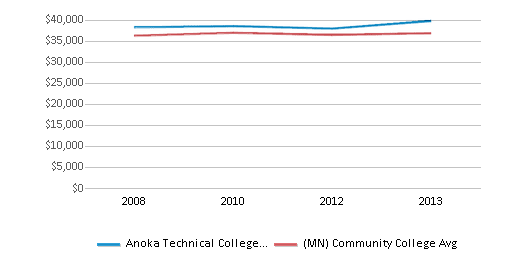
Tuition and Acceptance Rate
The public in-state tuition of $5,590 is more than the state average of $5,489. The in-state tuition has stayed relatively flat over four years.
The public out-state tuition of $5,590 is less than the state average of $6,145. The out-state tuition has stayed relatively flat over four years.
In-State Tuition Fees
$5,590
$5,489
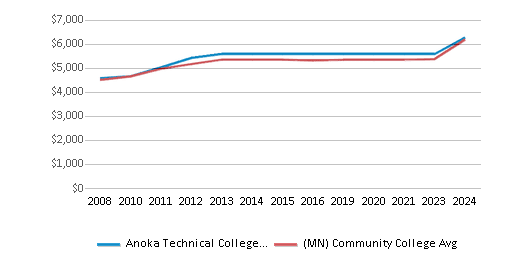
Out-State Tuition Fees
$5,590
$6,145
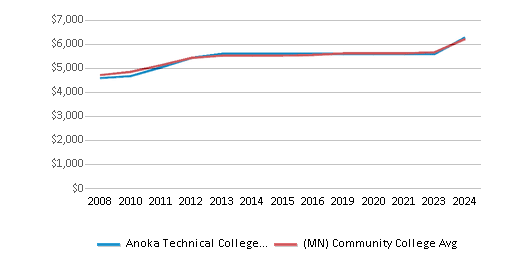
% Students Receiving Some Financial Aid
91%
89%
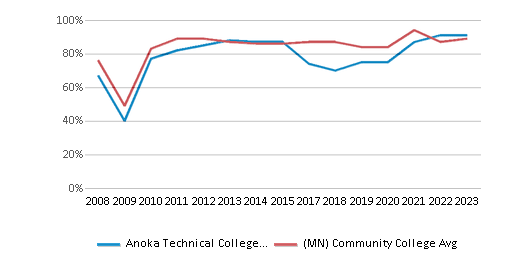
Median Debt for Graduates
$12,000
$12,264
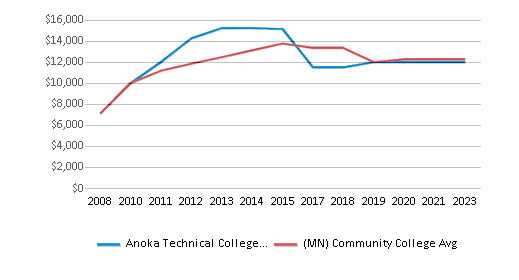
Median Debt for Dropouts
$7,130
$6,747
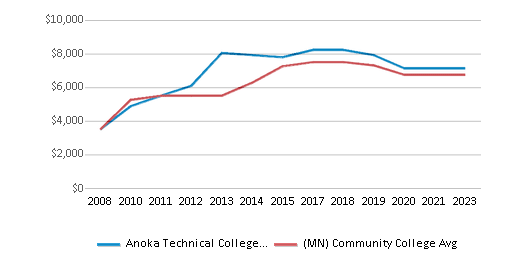
Acceptance Rate
n/a
94%
SAT Reading
n/a
625
SAT Math
n/a
600
SAT Writing
n/a
565
ACT Composite
n/a
24
ACT English
n/a
24
ACT Math
n/a
23
ACT Writing
n/a
8
Source: 2024 (or latest year available) Integrated Postsecondary Education Data System (IPEDS) , School Administrators
School Notes
- Anoka Technical College has nearly 30 certificate, diploma, and Associate of Applied Science degree career majors in eight Centers of Excellence: Business and Office, Design and Manufacturing, Electrical and Electronics, Golf/Horticulture, Health, Information Technology, Services and Transportation. We also offer a complete line of customized courses for business and industry � through our Customized Training Services division. These courses can be tailored to meet the needs of individuals or specific businesses and industries. Each year around 4,000 students of all ages are enrolled in credit course offerings at ATC's three campuses in Anoka County - a northwest metro area intersected by the Mississippi and Rum Rivers and only 30 minutes from downtown Minneapolis. About 90 percent commute daily, while others find temporary housing in Anoka area apartments and private homes.
Frequently Asked Questions
How much does Anoka Technical College cost?
Anoka Technical College's tuition is approximately $5,590 for In-State students and $5,590 for Out-State students.
Recent Articles

Obtaining Your Bachelor's Degree at a Community College
Explore the evolving landscape of community colleges offering bachelor's degrees, addressing affordability, accessibility, and workforce needs.

A to Z of Community College Certificates and Courses
From business and healthcare to technology and skilled trades, the article showcases the breadth of options available to students seeking to enhance their knowledge, develop new skills, or pursue career advancement.

What is a Community College?
This comprehensive guide explains what a community college is, its history, and its role in higher education. It covers the types of programs offered, differences from four-year colleges, benefits of attending, and important considerations for prospective students, providing valuable insights for those exploring educational options.

